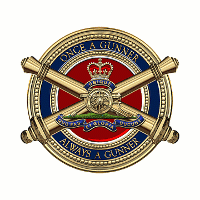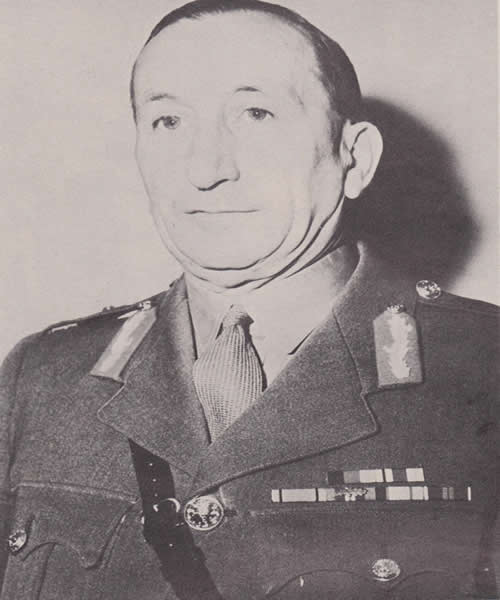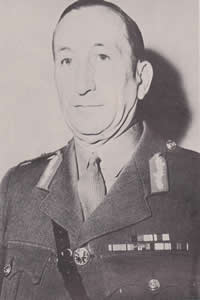| |
|
|
|
|
| |
|
|
|
|
| |
|
|
|
|
| |
|
AUSTRALIAN GUNNER
OBITUARY RESOURCE
|
|
|
| |
|
|
|
|
| |
|
|
|
|
| |
| |
| |
|
 |
|
|
| |
| |
Major General Albert Harold Hellstrom, CBE
(20 September 1899–14 June 1979) |
|
.
|
| |
|
|
|
| |
|
By Major G. L. Walker
(First published in Australian Gunner magazine March 1980)
|
|
| |
|
|
|
|
| |
|
| Printed Version |
|
|
|
|
| |
|
|
|
|
 |
On 14th June 1979 Major General A.H. Hellstrom CBE (RL) one of Australia’s distinguished sons passed away at his home at
North Balwyn in Victoria. The news of his passing was received almost with incredulity, for to those who knew hem he seemed to have the quality of indestructibility. On 19th June, at his funeral, representative from the military forces and friends from many walks of life recalled his service to the Armed Forces and the community of which he had long been and
outstanding citizen and paid humble tribute to his memory
Albert Harold Hellstrom was born in Sydney on 20th September1899. He was educated at the Sydney Boys High School and
the Royal Military College, Duntroon from which he graduated on 15th December 1921. Some other young Australians in the
same class of graduating cadets who distinguished themselves in later life were Hugh George Fredrick Harlock (Major General), Lindsay de Lisle Barham
(Major General), Alwyn Ragnar Garrett (Major General), Charles Henry Kappe (Major General) and George Henry O’Brien (Brigadier) to mention a few. Clive Raleigh Evatt was also a graduate that year but later left the military forces and earned distinction as a lawyer and Parliamentarian.
For seventeen years between 1921 and 1939 Albert Hellstrom served with the Royal Australian Artillery (RAA). From 1922 to 1923 he was attached to the Garrison Artillery 2nd Military District (2MD) in Sydney prior to training abroad in 1924 in India with the Royal Artillery (RA). On returning to Australia he took up duty once again in 2MD with the Field Artillery from 1925 to 1927 and with 1st Heavy Brigade during 1927 and 1928. From 1928 to 1936 he was Adjutant and Quartermaster (QM) with 14 Field Brigade 2nd Division at Marrickville until 1937 when he moved to 13th Field Brigade at Keswick South
Australia. Headquarters and 49th Field Battery were then at Keswick, 50th Field Battery at Prospect, 113rd Field Battery at Kilkenny with 48th Field Battery at Adelaide.
|
From Keswick Major Hellstrom was posted to the Royal Military College of Science in England in 1938 where he attended the Ordnance Officers course. He and his family returned to Australia in October 1939 just after the outbreak of World War LL. By this time the British Expeditionary Force had begun its move to France, Warsaw had surrendered to the Germans and the German U-Boat campaign was well under way. Early in 1940 with many other staff corps officers, Major Hellstrom was seconded to the AIF and joined HQ 7th Division bound for the Middle East where he served in Egypt as Assistant Director of Ordnance Services (ADOS) and raised and commanded the AIF Ordnance Provision Section Middle East.
During service in the Middle East he was mentioned in despatches. He continued as ADOS (plans) AIF, HO, ME to 1942 and then eturned to Australia as Deputy Director of Ordnance Services (DDOS) (provisions) LHQ, was promoted Colonel, and later became Chief Provisioning Officer in the Major-General of the Ordnance (MGO) Branch. In 1944 he served for a period of six months on special duties connected with Army Supplies in India, the United Kingdom and the United States. Early in 1946 he was appointed Director of Ordnance Services with the rank of rigadier and was made a Commander of the Most Excellent Order of the British Empire (CBE). In 1954 he was promoted Major General and posted as Controller of Army Design and Inspection. During this period he again visited the UK and USA on Army Supply duties. In 1956 he retired from the Army having served a continuous period of thirty five,
|
|
| |
| |
| |
| |
|
|
|
| |
|
|
|
|
| |
|
|
|
|
|
| |
| |
|
|
|
|
| |
|
|
|
|
|
| |
| |
| |
| |
|
|
|
| |
|
|
|
|
|


